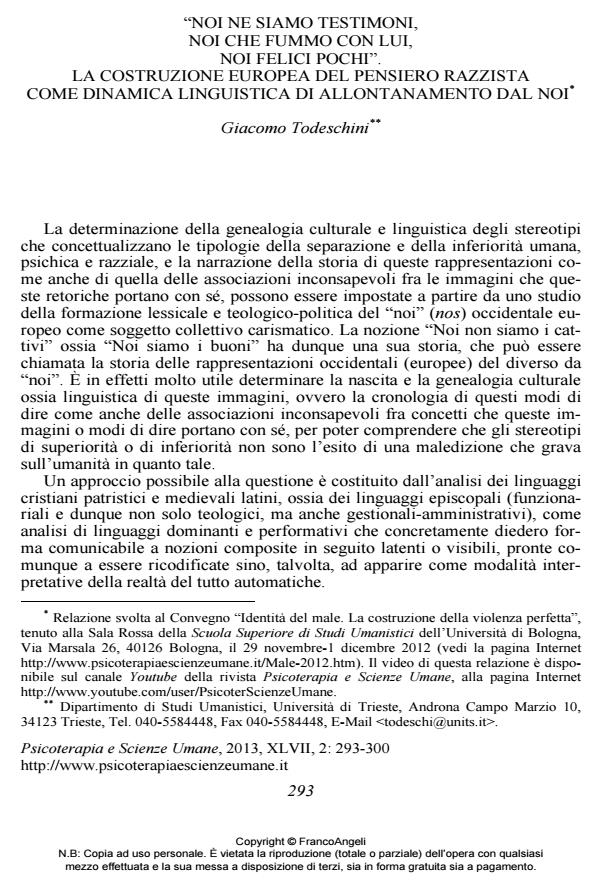"Noi ne siamo testimoni, noi che fummo con lui, noi felici pochi". La costruzione europea del pensiero razzista come dinamica linguistica di allontanamento dal noi
Titolo Rivista PSICOTERAPIA E SCIENZE UMANE
Autori/Curatori Giacomo Todeschini
Anno di pubblicazione 2013 Fascicolo 2013/2
Lingua Italiano Numero pagine 8 P. 293-300 Dimensione file 71 KB
DOI 10.3280/PU2013-002010
Il DOI è il codice a barre della proprietà intellettuale: per saperne di più
clicca qui
Qui sotto puoi vedere in anteprima la prima pagina di questo articolo.
Se questo articolo ti interessa, lo puoi acquistare (e scaricare in formato pdf) seguendo le facili indicazioni per acquistare il download credit. Acquista Download Credits per scaricare questo Articolo in formato PDF

FrancoAngeli è membro della Publishers International Linking Association, Inc (PILA)associazione indipendente e non profit per facilitare (attraverso i servizi tecnologici implementati da CrossRef.org) l’accesso degli studiosi ai contenuti digitali nelle pubblicazioni professionali e scientifiche
È possibile ricostruire la genealogia culturale e linguistica degli stereotipi che hanno gradualmente definito e raffigurato le tipologie della separazione e della inferiorità umana, psichica e razziale, a partire da uno studio della formazione lessicale e teologico-politica del "noi" (nos) occidentale europeo come soggetto collettivo carismatico. La storia di queste rappresentazioni e delle associazioni inconsapevoli fra le immagini che queste retoriche portano con sé consente di leggere nel discorso razzista e discriminatorio un percorso lungo e stratificato, lentamente entrato a far parte del modo europeo occidentale, oltre che di pensare e percepire le relazioni fra persone e fra gruppi.
Parole chiave:Noi, altri, cristiani, ebrei, umanità
Giacomo Todeschini, "Noi ne siamo testimoni, noi che fummo con lui, noi felici pochi". La costruzione europea del pensiero razzista come dinamica linguistica di allontanamento dal noi in "PSICOTERAPIA E SCIENZE UMANE" 2/2013, pp 293-300, DOI: 10.3280/PU2013-002010